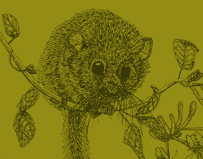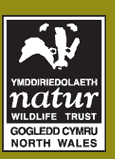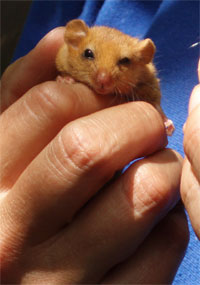
photo by Rhian Hughes
Dormice have a relatively long lifespan for a small mammal, living up to four or five years.
The breeding season is between June and September and the litters are usually four or five in number, however this can change, especially in years when the food supply is good. The young stay with their mother for up to eight weeks before leaving the nest. Dormice usually have 2 litters a year, one in June or July and a second litter in September.
Food
Dormice rely on a habitat which provides a wide variety of food.
They feed on different food sources at different times of the year. The obvious food source is the hazelnut which is eaten before the dormouse goes into hibernation, providing much energy to build up their winter fat reserves. There are many other foods which dormice rely on such as honeysuckle (the bark of which is also a large component of their nesting material), brambles (flowers and fruits) and insects.

Hazelnuts opened by other small mammals
One method of determining the presence of dormice is to find the signs, for example by examining the discarded hazelnut shells. Dormice open hazelnuts in a different way from other small mammals by rotating the nut whilst gnawing. This leaves a distinguishing smooth edge on the inside of the nut opening.
The illustrations below show the differences in hazelnuts discarded by the dormouse and by other small mammmals.
Hazelnut shells which appear to have been 'split' or pecked open are usually the result of grey squirrels or nuthatch.
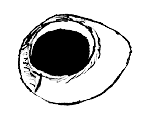
Dormouse
The inner surface of the hole is smooth with tooth marks around the outside. The hole is usually very round and incorporates the base end of the shell.
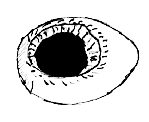
Wood Mouse
Tooth marks on the inside and around the outside of the hole. Hole sometimes has a jagged edge.
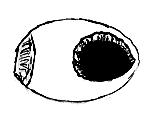
Bank Vole
Tooth marks on the inside
of the hole with no marks
on the outside shell surface.
Illustrations
Jan Whittington 2007
